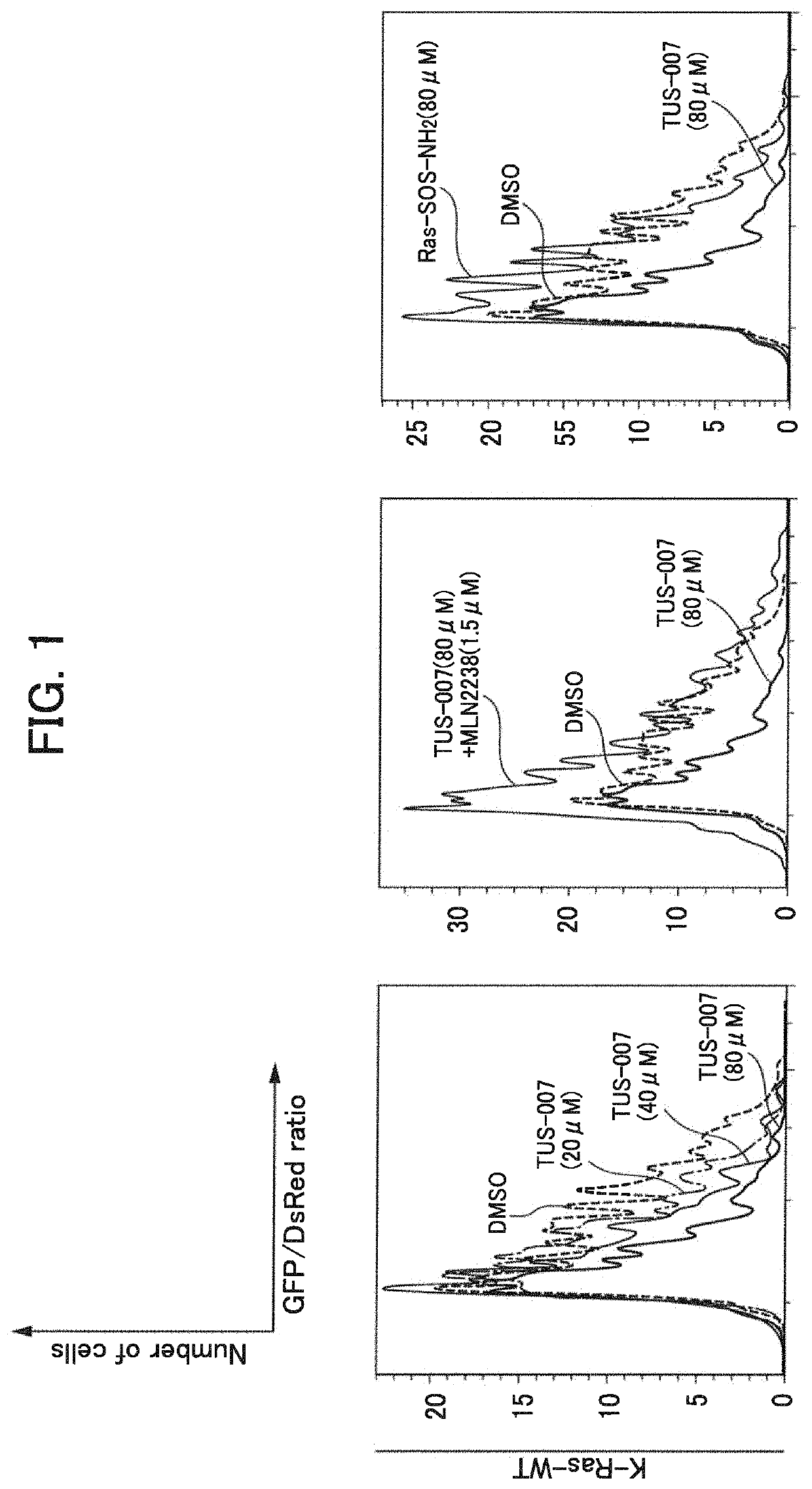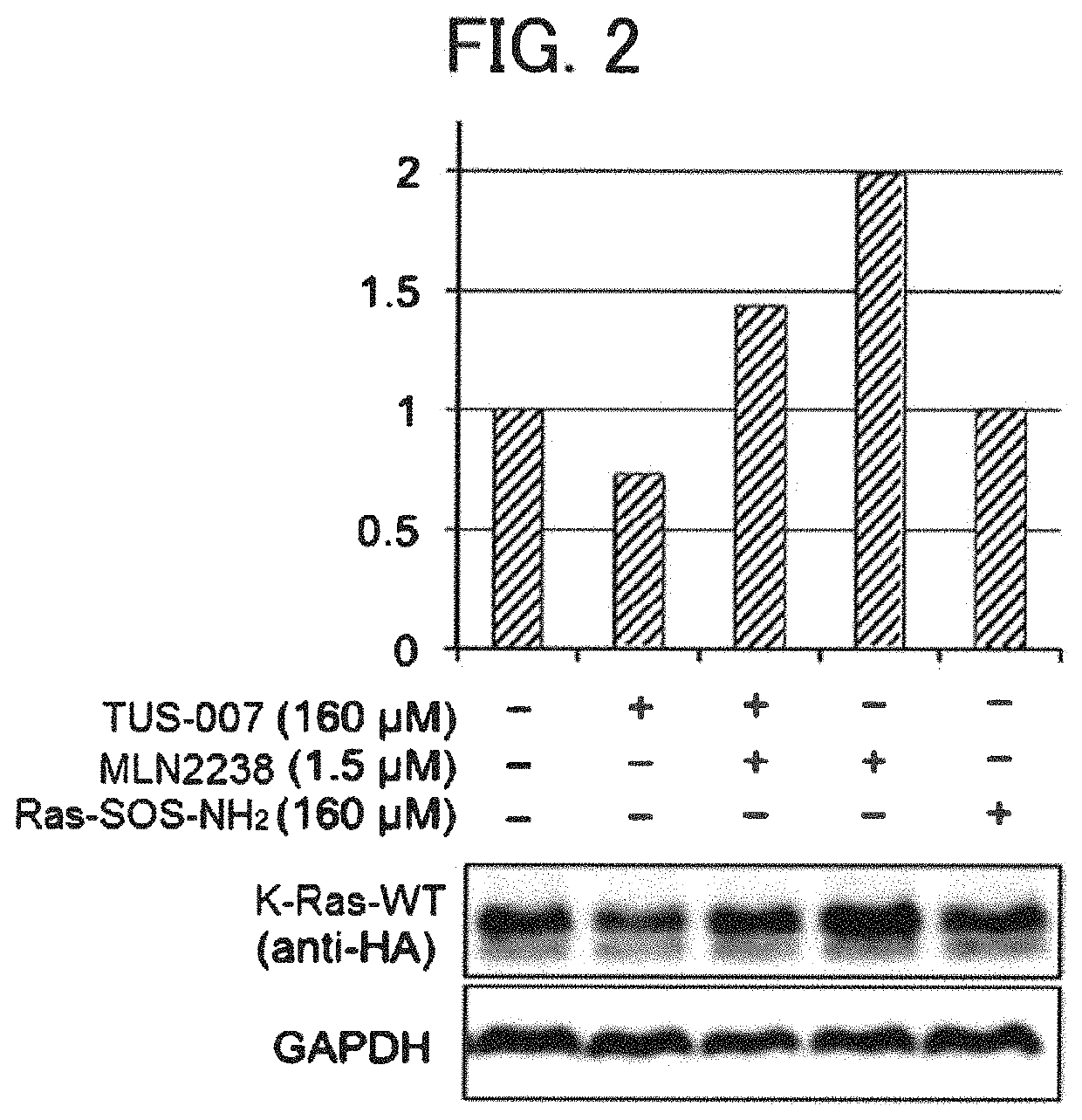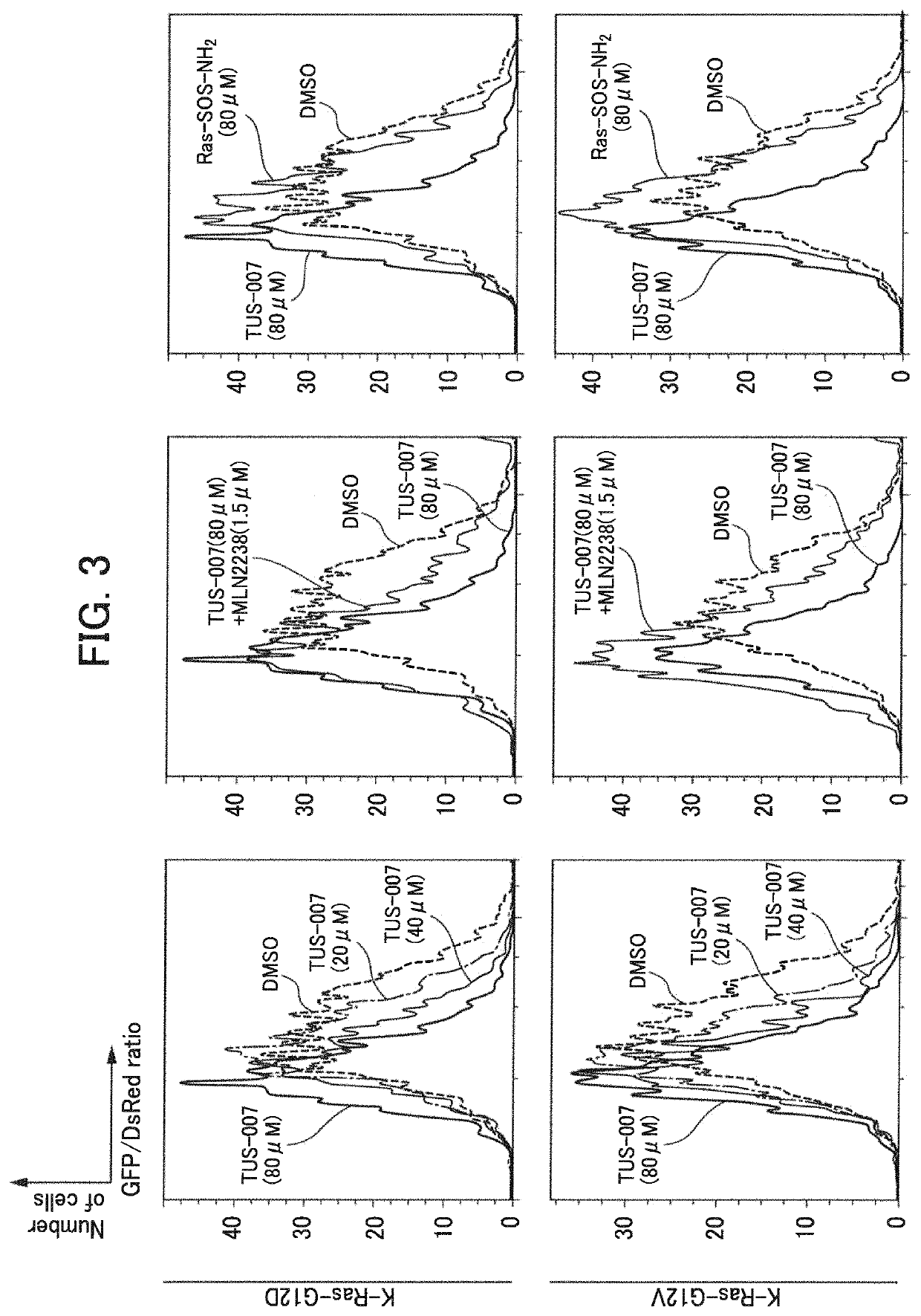Ras protein degradation inducing molecule and pharmaceutical composition
a protein degradation and inducing molecule technology, applied in the direction of drug compositions, peptide/protein ingredients, immunological disorders, etc., can solve the problems of unfavorable drug development and difficult target (undruggable target) for ras protein discovery
- Summary
- Abstract
- Description
- Claims
- Application Information
AI Technical Summary
Benefits of technology
Problems solved by technology
Method used
Image
Examples
example 1
[0240]In Example 1, a Ras protein affinity molecule and a protein-degradation inducing tag were linked to each other to synthesize TUS-007 as a Ras protein-degradation inducing molecule.
[0241]Ras-SOS-NH2 represented by the following formula was used as the Ras protein affinity molecule. Ras-SOS-NH2 is a compound obtained by reacting an amino group of Ras-SOS represented by the following formula with H2N—(CH2)6—COOH.
[0242]
[0243]Ras-SOS is Compound 12 described in the document by Sun, Q. et al. (Sun, Q. et al., Angew. Chem. Int. Ed., 2012, 51, 6140-6143) (see No. 22 in Table 4). When a SOS protein is bound to the Ras protein, GDP bound to the Ras protein is replaced with GTP, and the Ras protein is activated. It is known that Ras-SOS is bound to the Ras protein to inhibit the interaction between the Ras protein and the SOS protein, thus inhibiting the activation of the Ras protein. Furthermore, it is known that Ras-SOS is bound to not only a wild-type K-Ras protein but also a G12D mut...
example 2
[0257]In Example 2, degradation (knockdown) of a wild-type K-Ras protein forcibly expressed in HeLa cells (human cervical cancer cells) through TUS-007 was evaluated by FACS analysis.
(Preparation of Plasmid)
[0258]A plasmid expressing a wild-type K-Ras protein (K-Ras-WT) was prepared using a plasmid (pMIR-DsRed-IRES-ecDHFR-HA-GFP) expressing an ecDHFR protein by RF cloning. The full-length cDNA clone (Accession No. AK292510) of a human K-ras gene was purchased from Independent Administrative Institution, the National Institute of Technology and Evaluation. PCR amplification was performed using KOD-Plus-Neo (TOYOBO CO., LTD) as a PCR enzyme. Forward primers and reverse primers used for RF cloning are shown in Table 92.
[0259]
TABLE 92SEQIDPrimer nameSequence (5′→3′)No.RFC_IRES-CACGATGATAATATGGCCACAACCATGACTG1HsKras-HA_FwAATATAAACTTGTGGTAGRFC_IRES-GAACGTCGTACGGGTAATCGATCATAATTAC2HsKras-HA_RvACACTTTGTCTTTGAC
(Introduction of Plasmid into HeLa Cells and Cell Seeding)
[0260]The plasmid was in...
example 3
[0267]In Example 3, degradation (knockdown) of a forcibly expressed wild-type K-Ras protein in HeLa cells through TUS-007 was evaluated by Western blot analysis.
(Preparation of Plasmid)
[0268]A plasmid expressing the wild-type K-Ras protein (K-Ras-WT) was prepared, as in Example 2.
(Introduction of Plasmid into HeLa Cells and Cell Seeding)
[0269]As in Example 2, the plasmid was introduced into HeLa cells to transiently overexpress the wild-type K-Ras protein (specifically, a fusion protein of the wild-type K-Ras protein and GFP through a HA tag) or a DsRed protein for comparison in the cells. HeLa cells into which the plasmid had been introduced were seeded in a 24-well plate at a cell density of 4×104 cells / well, and then cultured under conditions of 37° C. and 5 vol % CO2 for 40 hours.
(Addition of TUS-007 to HeLa Cells)
[0270]Culture was performed for 40 hours after introduction of the plasmid, and then TUS-007 was added to HeLa cells as follows. As a medium, a serum-free medium (37° ...
PUM
| Property | Measurement | Unit |
|---|---|---|
| temperatures | aaaaa | aaaaa |
| pore size | aaaaa | aaaaa |
| pH | aaaaa | aaaaa |
Abstract
Description
Claims
Application Information
 Login to View More
Login to View More - R&D
- Intellectual Property
- Life Sciences
- Materials
- Tech Scout
- Unparalleled Data Quality
- Higher Quality Content
- 60% Fewer Hallucinations
Browse by: Latest US Patents, China's latest patents, Technical Efficacy Thesaurus, Application Domain, Technology Topic, Popular Technical Reports.
© 2025 PatSnap. All rights reserved.Legal|Privacy policy|Modern Slavery Act Transparency Statement|Sitemap|About US| Contact US: help@patsnap.com



